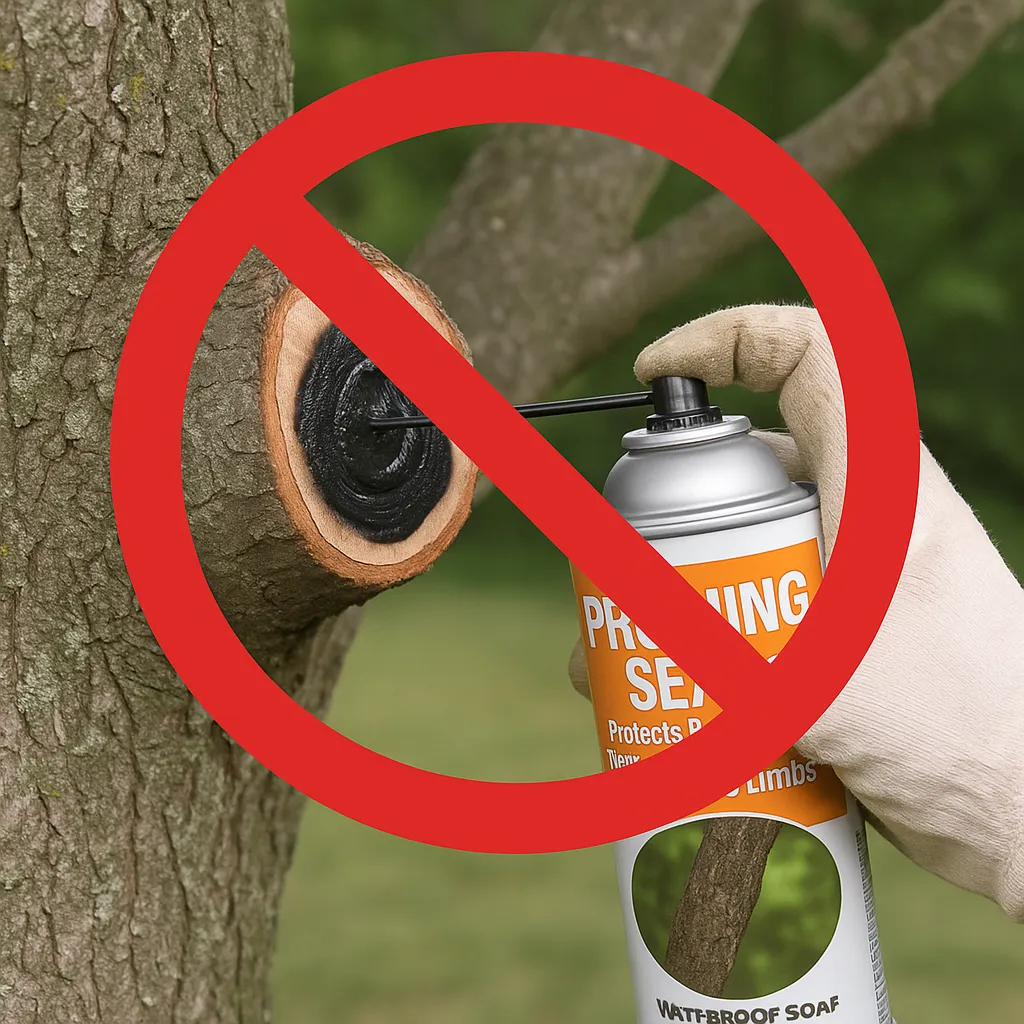
Why You Should Never Use Pruning Sealant on Your Trees
Why You Should Never Use Pruning Sealant on Your Trees
And the One Rare Exception to the Rule
After a storm or a weekend of pruning, it’s tempting to reach for a can of pruning sealant or tree wound dressing—especially when the label claims it “protects prune trees and shrub limbs.” But flip the can over, and you’ll notice something odd: that same product is also advertised for waterproofing rain gutters, patching asphalt driveways, and sealing the underside of a lawnmower deck.
This isn’t a tree care product—it’s a general-purpose waterproof sealant. And that’s exactly why it’s harmful to trees.
Trees Aren’t Wooden Fences—They’re Alive
Trees are living, breathing organisms. Their bark and wood aren’t static like lumber—they’re dynamic tissues actively protecting the tree and responding to injury. Think of bark like skin. When your skin gets cut, you might put a bandage on temporarily to keep it clean. But what happens if you leave that bandage on for too long? It gets soggy, traps bacteria, and the skin underneath can’t heal properly. It needs air.
Tree wounds work the same way. When a limb is pruned or a tree is damaged in a storm, the tree immediately begins a natural process of compartmentalization. It seals off that area internally to contain any decay and protect the rest of the tree. But when you coat that wound in a waterproof layer, you trap moisture and decay fungi inside—creating a perfect environment for rot to flourish.
🧠 Arboricultural Term of the Day: Compartmentalization
Trees don’t “heal” the way we do—they compartmentalize. This is a defense process where a tree walls off damaged or infected tissue with new growth, preventing the spread of decay. This system, called CODIT (Compartmentalization of Decay in Trees), is how trees isolate wounds and continue to grow despite injury. Sealants interfere with this natural process.
The Science (and Standards) Say No
The International Society of Arboriculture (ISA), along with decades of research in tree physiology and pathology, explicitly advise against the use of pruning paints, wound dressings, or sealants. These materials do not prevent decay. In fact, they often encourage it.
So why are these products still on store shelves? Marketing. Not science.
The One Exception: Oaks and Elms in Summer
There is one very specific scenario where a wound dressing may be used—and it has nothing to do with waterproofing.
When oaks or elms are pruned or injured during the growing season, the fresh wounds release trace amounts of ethyl alcohol. This chemical acts like a dinner bell for certain bark beetles. These beetles are known carriers of deadly diseases: oak wilt and Dutch elm disease. If they find a fresh wound and transmit spores into it, the tree’s fate is often sealed.
In these cases, professionals may use a very different type of wound dressing—not to seal out moisture, but to mask the alcohol signal and reduce beetle attraction. It’s not ideal, but it’s the lesser evil when pruning cannot be avoided. Ultimately, the better choice is to avoid pruning these species during the growing season altogether.
Bottom Line: Let Trees Heal Naturally
If your tree has been pruned—or damaged by wind or weather—leave the wound uncovered. Don’t paint it. Don’t seal it. If you’re worried about whether a cut was made properly or if a tree is at risk, call a certified arborist to evaluate.
Your tree already knows how to begin the healing process. The best thing you can do is step back and let it.
